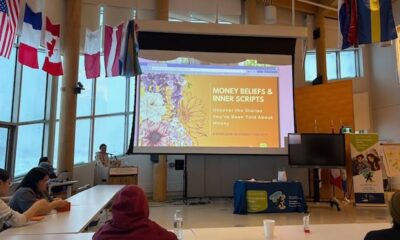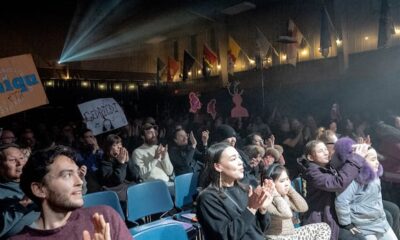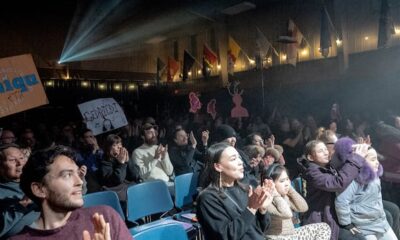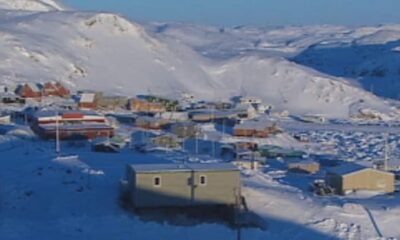Entertainment
Iqaluit Youth Drive March for Truth and Reconciliation
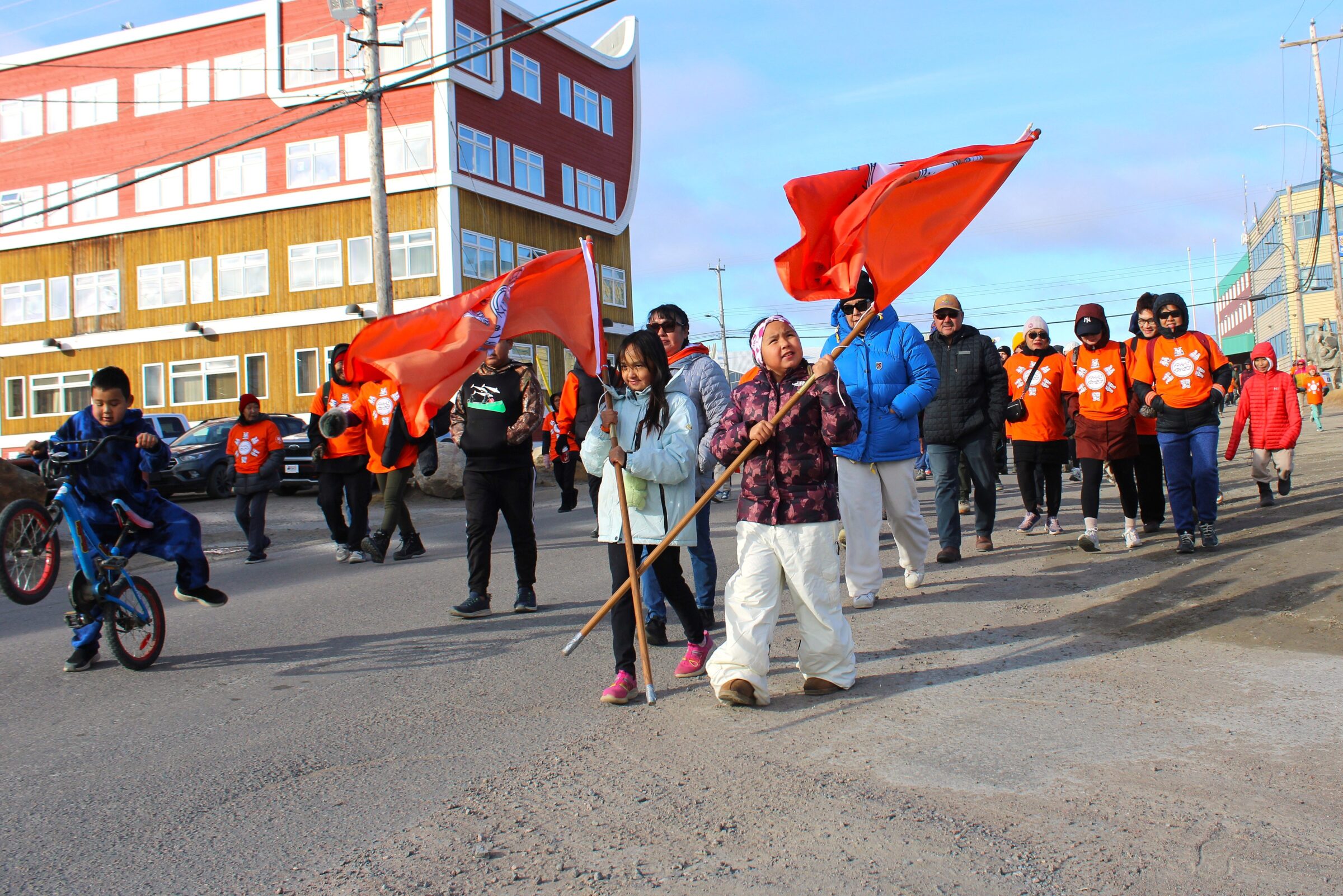
A march in Iqaluit on September 30, 2023, brought together approximately 400 participants in a vibrant display of solidarity for the National Day for Truth and Reconciliation. Leading the procession were two young girls, Hope Akeeagok, nine, and her friend Arnariinaq Mike, eight, who carried orange flags to honor the survivors of residential schools and commemorate those who never returned home.
Community Spirit and Resilience
Despite challenging weather conditions, including winds reaching up to 37 km/h, the girls proudly waved their flags throughout the half-kilometer march from the Four Corners intersection to Iqaluit Square, located in front of the Elders Qammaq. “It was a little bit heavy,” Akeeagok remarked after the event, reflecting on the significance of their symbols.
The event served as a poignant reminder of the ongoing journey toward healing and reconciliation. Former Nunavut MP and residential school survivor Jack Anawak emphasized the importance of passing knowledge to the youth. “They have much more oomph than us, and I think that I have better confidence that they’ll come through for us,” he stated, highlighting the critical role young people play in shaping the future.
Organizers from the Qikiqtani Inuit Association enhanced the festive atmosphere by distributing orange T-shirts and engaging children with a traditional candy toss, known as a parlak, which capped off the event. The participation of many children underscored the day’s focus on education and awareness regarding the historical impacts of residential schools.
Reflecting on the Legacy of the Truth and Reconciliation Commission
This year marks the 10th anniversary of the release of the Truth and Reconciliation Commission of Canada’s final report. This significant document detailed the experiences of survivors and proposed 94 recommendations aimed at fostering reconciliation with Indigenous Peoples. In a statement, Governor General Mary Simon acknowledged the report’s impact, noting, “The stark truth about the residential school system and the stories bravely shared by survivors sparked a national awakening.”
Former Nunavut Premier Paul Quassa, also a residential school survivor, spoke about the importance of the day for the younger generation. “It’s very important for this generation to know where they came from,” Quassa said, reinforcing the idea that understanding historical struggles equips youth with the resilience to face their own challenges.
As the march concluded, organizers adapted to the elements by shortening some speeches, allowing participants to find refuge from the wind. For those who may struggle with the day’s emotional significance, the Nunavut Kamatsiaqtut Help Line is available at 1-800-265-3333, and the National Indian Residential School Crisis Line can be reached at 1-866-925-4419.
The collective efforts of the community, especially its youth, illuminated the path forward, embodying a commitment to remembrance and reconciliation. The National Day for Truth and Reconciliation serves as a vital reminder of the resilience of Indigenous Peoples and the ongoing need for dialogue and understanding.
-

 Politics4 weeks ago
Politics4 weeks agoSecwepemc First Nation Seeks Aboriginal Title Over Kamloops Area
-

 World5 months ago
World5 months agoScientists Unearth Ancient Antarctic Ice to Unlock Climate Secrets
-

 Entertainment5 months ago
Entertainment5 months agoTrump and McCormick to Announce $70 Billion Energy Investments
-

 Science5 months ago
Science5 months agoFour Astronauts Return to Earth After International Space Station Mission
-

 Lifestyle5 months ago
Lifestyle5 months agoTransLink Launches Food Truck Program to Boost Revenue in Vancouver
-

 Technology3 months ago
Technology3 months agoApple Notes Enhances Functionality with Markdown Support in macOS 26
-

 Lifestyle3 months ago
Lifestyle3 months agoManitoba’s Burger Champion Shines Again Amid Dining Innovations
-

 Top Stories2 months ago
Top Stories2 months agoUrgent Update: Fatal Crash on Highway 99 Claims Life of Pitt Meadows Man
-

 Politics4 months ago
Politics4 months agoUkrainian Tennis Star Elina Svitolina Faces Death Threats Online
-

 Sports5 months ago
Sports5 months agoSearch Underway for Missing Hunter Amid Hokkaido Bear Emergency
-

 Politics5 months ago
Politics5 months agoCarney Engages First Nations Leaders at Development Law Summit
-

 Technology5 months ago
Technology5 months agoFrosthaven Launches Early Access on July 31, 2025

